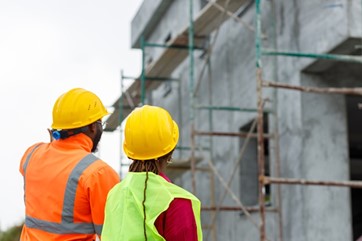
In construction and building safety, ensuring structural integrity and compliance with safety standards are paramount. Destructive testing plays a crucial role in this process, providing essential insights into the strength, durability, and safety of building materials and components. Antonio Madureira of AV Builder Corp explores the significance of destructive testing, its methodologies, and its impact on ensuring robust building safety measures.
What is Destructive Testing?
Destructive testing, as the name suggests, involves subjecting building materials or components to extreme conditions that exceed normal operational limits. The goal is to assess their performance under stress, identify weaknesses, and determine their ultimate failure points. Unlike non-destructive testing methods that examine materials without causing damage, destructive testing involves deliberate damage to analyze how structures respond under adverse conditions.
Importance of Destructive Testing
Ensuring Structural Integrity: Destructive testing helps verify that building materials and structural components meet design specifications and safety standards. By subjecting samples to extreme conditions such as tension, compression, and impact, engineers can assess their load-bearing capacity and resilience.
Quality Assurance: Testing materials through destructive methods provides empirical data on their mechanical properties, including strength, elasticity, and ductility. This information is critical for ensuring that materials used in construction can withstand expected stresses and environmental conditions over their intended lifespan.
Identifying Defects and Weaknesses: Destructive testing reveals hidden defects, manufacturing flaws, or inconsistencies in materials that may compromise structural integrity. Detecting these issues early helps prevent potential failures and hazards in real-world applications.
Compliance with Regulatory Standards: Building codes and safety regulations often require rigorous testing to ensure buildings and infrastructure meet safety and performance criteria. Destructive testing provides objective evidence that structures comply with these standards, protecting occupants and minimizing liability risks for stakeholders.
Methods and Techniques
Destructive testing employs various methodologies tailored to specific materials and structural components:
Tensile Testing: This method evaluates the tensile strength of materials by pulling them apart using controlled force. It helps determine how much stress a material can withstand before breaking.
Compression Testing: Compression tests involve applying compressive force to materials to assess their ability to withstand pressure. This method is crucial for evaluating materials used in load-bearing columns, walls, and foundations.
Impact Testing: Impact tests simulate sudden forces or collisions to evaluate how materials and components respond to abrupt shocks. It helps assess resilience and durability, particularly for structures prone to impact events.
Bend Testing: Bend tests bend samples to measure flexibility and resistance to deformation. It is essential for assessing materials used in structural beams, pipes, and other components subject to bending forces.

Applications in Building Safety
Destructive testing is applied across various stages of building construction and maintenance:
Material Selection: Testing helps engineers select suitable materials based on performance data, ensuring they meet project requirements and environmental conditions.
Quality Control: During fabrication and construction, periodic destructive testing verifies the quality and consistency of materials used, identifying deviations from specifications.
Structural Assessment: Testing existing structures assesses their condition, detects deterioration, and informs maintenance or retrofitting decisions to prolong service life and enhance safety.
Failure Analysis: When failures occur, forensic testing investigates root causes, contributing to improvements in design, materials, or construction practices to prevent future incidents.
Challenges and Considerations
While destructive testing offers invaluable insights into building safety, it presents challenges and considerations:
Cost and Time: Testing can be expensive and time-consuming, requiring specialized equipment, skilled personnel, and careful planning to minimize disruptions to construction schedules.
Sample Size: Testing must accurately represent materials and conditions in actual use, requiring sufficient sample sizes and considerations for variability in material properties.
Environmental Impact: Destructive methods produce waste and emissions, necessitating proper disposal and environmental management practices.
Conclusion
Destructive testing is indispensable for ensuring the safety, reliability, and compliance of buildings and infrastructure. By subjecting materials and components to extreme conditions, engineers gain critical insights into their performance under stress, identifying weaknesses and ensuring they meet rigorous safety standards. As technology advances and standards evolve, the role of destructive testing continues to expand, contributing to safer buildings and infrastructure worldwide. Embracing these methodologies ensures that construction practices prioritize safety, durability, and resilience in the face of diverse environmental challenges.